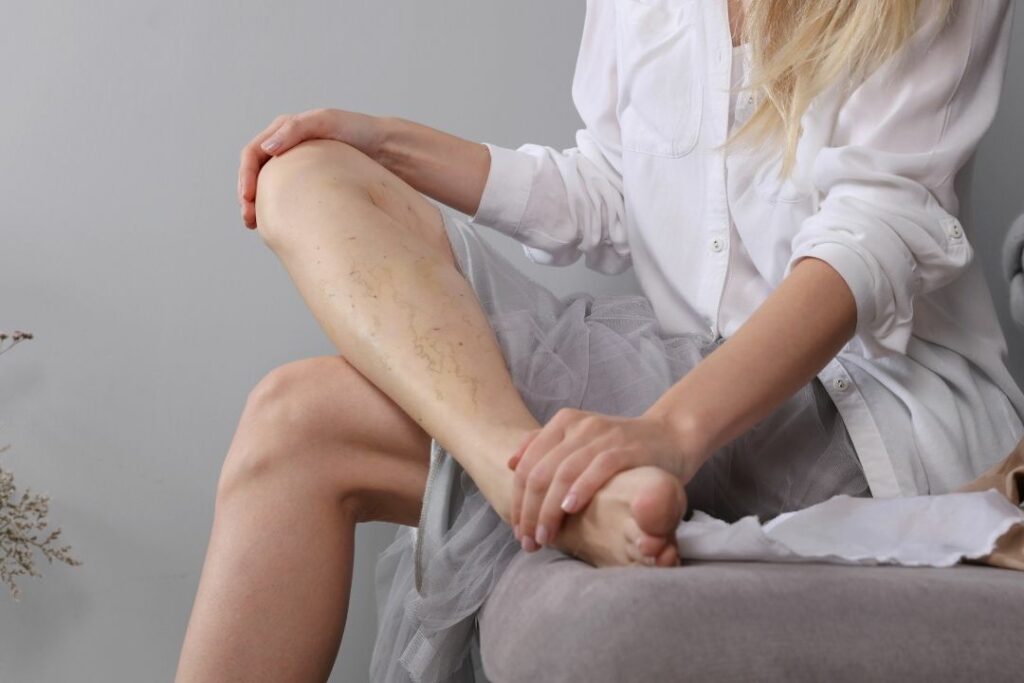
There are many misconceptions about varicose veins, or the twisted, swollen, dark blue or purple-colored veins that bulge beneath the skin’s surface. Some examples of these myths are that the veins are just a cosmetic concern, they only affect women of a certain age, and that they appear more often in active people.
However, the truth is varicose veins are common and can affect anyone – about one third of all adults have them. You are more likely to experience varicose veins if you:
- Are 40 years of age or older
- Have a strong family history of varicose veins
- Are highly active or sedentary
- Have had blood clots or damaged veins in the past
While varicose veins may seem harmless, they can be a cause of pain and discomfort that can affect your quality of life.
Vein Pain Relief
Along with being unsightly, varicose veins may cause physical discomfort including itching, fatigue, pain or tenderness near or over the veins, swelling, and possible ulceration (skin tears). There are a few at-home remedies that you can try to help relieve mild symptoms.
- Elevate Your Legs – Raising or elevating your legs is one of the easiest ways to get pain relief. The best practice is to raise them higher than your heart for thirty-minute periods. This helps get blood back to your heart.
- Compression Socks – Wearing compression socks or stockings help to increase blood flow and reduce the chance of swelling, ultimately reducing achiness and pain.
- Exercise – Exercising regularly helps to get your blood moving. Walking in particular is a great option as it targets the contraction of your calf muscles. Varicose veins are often present in your legs.
If your symptoms are more severe or you’re not seeing improvement from the at-home relief methods, it’s time to seek treatment. There are several effective and safe techniques that exist to treat varicose veins.
- Radiofrequency ablation or laser ablation are outpatient procedures that do not require anesthesia or sedation. After your skin is numbed, a small needle and catheter is inserted into the vein for treatment. The radio or light energy is directed at the vein causing it to gradually fade or disappear; multiple treatments are required, and the procedure is used to treat small varicose veins.
- Sclerotherapy, in which a chemical is injected into the vein to collapse its walls so it can no longer transport blood.
- Surgical removal, or stripping, of the vein.
Unfortunately, no treatment can prevent new veins from becoming varicose. Before pursuing a particular treatment, discuss all options with your provider.
Whether your varicose veins bother you or not, it’s important to tell your doctor about them. Their presence might be a sign of a greater vein problem showing that blood is not flowing well to your heart. The longer treatment is delayed, the more difficult it becomes to treat these vein problems.
Mariam Salisu, MD, MPH is with UPMC Pain Management and sees patients at UPMC facilities in Williamsport, Lewisburg, and Lock Haven. To schedule an appointment with Dr. Salisu, call 570-326-8457. For more information, visit UPMC.com/PainManagementNCPA.


